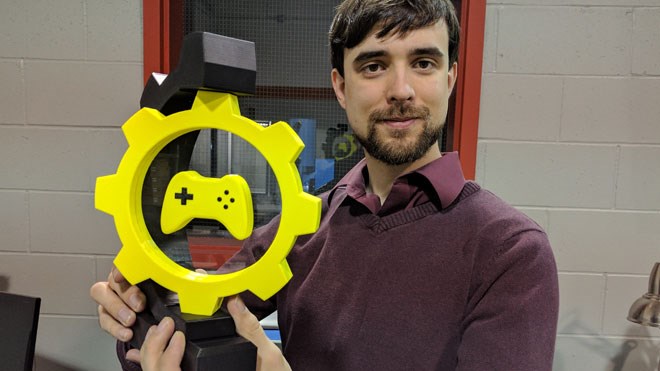Big-budget video games can take years to develop and involve diverse teams of computer programmers, artists, writers and musicians to come to life.
But a local competition will explore the opposite end of the video game design spectrum, and will challenge 20 teams to build a functioning game in 48 hours.
The second annual Sudbury Game Design Challenge will take place the weekend of Jan. 13 to Jan. 15, and will force multi-disciplinary teams to be creative with strict limitations.
“I love seeing the creativity that gets distilled down in that kind of timeframe,” said Mike Daoust, the event's organizer. “As soon as you're given a 48-hour period the entire process of bringing all these different disciplines together, and being really creative in how you do that, becomes really exciting to watch.”
Daoust was inspired by a Canada-wide competition, called the Great Canadian Appathon, to launch a local game design competition.
The Appathon challenged teams – mostly from Canadian universities – to develop a functioning app for Android or iOS in a 48-hour period. When that competition ended Aaron Langille, a Laurentian University lecturer and one of the founders of the university's game design specialization, started a game design competition at the university.
“That went well for a year, but the scope was rather limited,” said Daoust.
The competition was limited to Laurentian students. Daoust was one of those students, and also one of the game design specialization's first graduates.
After graduating, he decided to host a competition anyone with the necessary skills could participate in. The first Sudbury Game Design Challenge featured 13 teams.
While most of the participants were computer science students from Sudbury (and a few from Sault Ste. Marie) some professionals also took part. Local mining software company Symboticware sent a team to the competition.
The teams had to build “lightning games” which could be played in short segments. Daoust said the winning team – from Laurentian University – built a game that combined elements of dodgeball and air hockey.
The game placed two players against each other in an effort to score points by shooting balls that had the same colour as their sprites.
Thanks to positive word of mouth Daoust said the competition had no trouble attracting 20 teams – 16 from Sudbury and four from other parts of Northern Ontario – for the second edition.
When the competition begins at the NORCAT offices on Jan. 13 teams will be given a theme (like lightning games in 2016) they must follow.
From that point on they can use whatever development tools they want to get the job done, and can develop their game for any platform.
Four judges will take a number of factors into account – including graphics, gameplay, music and adherence to the theme – to choose the winning team.
The judges are Jamie Parent, a Sudbury-based programmer who has worked on several games in the popular Call of Duty franchise; Pancho Eekels, a game designer who helped design many of the levels in the Unreal Tournament games; Laurentian's Aaron Langille; and Renée Higgins, a web developer with the City of Greater Sudbury and organizer with Ladies Learning Code in Sudbury.
The winning team will receive a $1,500 cash prize along with a victory party at the Let's Scrabbalatte Board Game Café and a table at Graphic-Con Sudbury to showcase their game.
In future competitions Daoust said he would like to provide opportunities for successful teams to fine-tune their games and eventually bring them to market.
“We don't retain any of the rights to the games produced during the competition,” he said.
The competition is volunteer-run and sponsored by a number of local organizations including the Fortin Foundation, NORCAT, Laurentian University, SymboticWare and AdvanceWorx.
